News
2021 Space Odyssey - Part 2
A Hot Year for Space Science: Astronauts, Lunar Exploration, New Rockets and Much More
Updated in March 2021
2021 is shaping up to be a “year of space”—in addition to the topics introduced in Part 1, there is news about astronauts, developments of new manned spacecraft, moves related to lunar exploration, and new rockets. In this article we will learn about the plans, prospects, and major foreseeable events of 2021 (or later into early 2022).
Noguchi to Take Part in Extravehicular Activities; Hoshide Becomes Captain
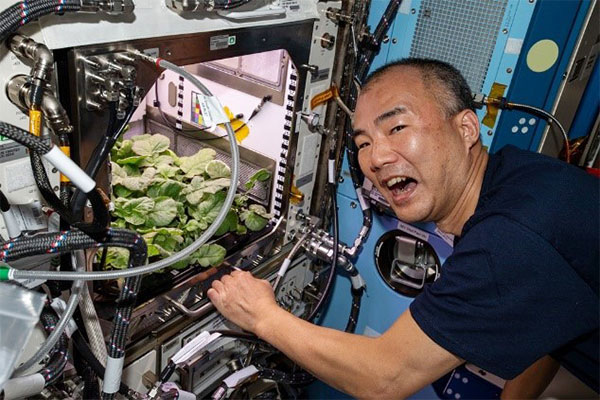
2021 is the year to look forward to the activities of Japanese astronauts. Noguchi Soichi has been staying aboard the International Space Station (ISS) for half a year since November 2020. The ISS orbits Earth at an altitude of 400 km. Hoshide Akihiko will arrive around spring of this year and will be the second Japanese captain of the ISS. It is highly probable that the two will stay there at the same time. If this happens, it will be the second time for multiple Japanese to stay aboard the ISS since 2010 when both Noguchi and Yamazaki were there.
This is Noguchi's third space flight. In December 2020, Japan conducted an experiment to cultivate a fundamental tissue of the liver, made of iPS cells (human-derived induced pluripotent stem cells), together with a structure imitating a blood vessel. By utilizing microgravity, the liver tissue and the blood vessel-like structure were cultivated three-dimensionally in space. Also conducted were protein crystal production experiments, which Japan has been committed to for a long time. On February 20, it was revealed that Mr. Noguchi will carry out extravehicular activities (EVA) in February as well. This is the fourth time for Mr. Noguchi, and it marks the highest number of times for a Japanese astronaut to take part in EVA. During this period, there will be experiments investigating how various materials burn on board, and the release of microsatellites.
Hoshide Akihiko is the second Japanese ISS captain since Koichi Wakata (2014). “I want to take on the role of captain by incorporating the best of my predecessors, and also by reflecting my uniqueness─I will prioritize safety amidst dangerous situations and hope that the crew can feel enjoyment in our activities,” Mr. Hoshide said. Besides astronauts, ground control teams and coordinators also bear vital importance in fulfilling the heavy responsibilities of space travel. Japan’s manned space activities will be evaluated from many aspects in this challenging year.
Boeing to Try Again for ISS
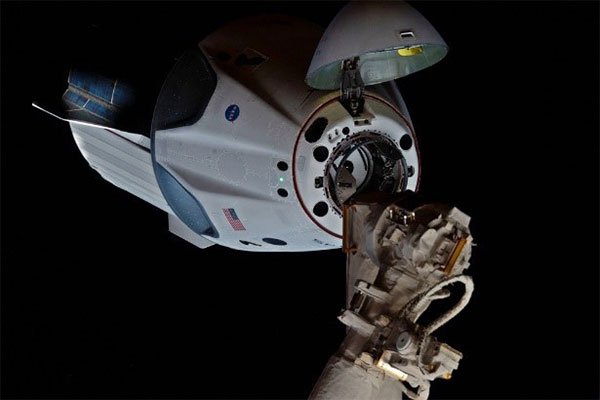
Mr. Noguchi has arrived at the ISS via the first full-scale operation of SpaceX’s Crew Dragon spacecraft, and Mr. Hoshide will join the team on the succeeding spacecraft, SpaceX Dragon 2. The Crew Dragon is the first US manned ship in nine years since the Space Shuttle was retired in 2011. A successful manned test flight last August proved there is no longer any need to rely on Russia's manned vessels. The body of Dragon 2 will be a reuse of the Crew Dragon 1 and its specifications will be the same as that of the manned test flight.
The Boeing Company (US) is also developing a manned ship called "Starliner." Starliner’s unmanned test flight in December 2019 was not able to reach the ISS, and the ship is being worked on to fully prepare it for the next attempt. NASA plans to make a second unmanned test flight on March 29th this year and a manned test flight in June.
The International Space Station, co-operated by Japan, the United States, Europe, Russia and Canada began construction in 1998, with long-term stays by astronauts beginning in 2000. Each country has conducted a variety of experiments in life sciences and materials-related fields. From Japan, seven astronauts have experienced nine long-term stays, and through the development and operation of the unmanned supply machine H-II Transfer Vehicle "Kounotori" and the Japanese experiment module "Kibo", Japan has raised its skills in manned space exploration to a world-class level.
The ISS is scheduled to operate until 2024, and this year participating countries will be considering and adjusting their plans to extend the program. The US Congress is discussing a bill to extend the operation up to 2028-2030. In terms of Japan's participation in the extension, the points to be considered are ISS’ role as a demonstration site for technologies required for lunar exploration (described below), the participation of private companies, and the promotion of international cooperation. The lifespan of the ISS is said to be around 30 years, so now may be time to plan a next-generation base.
Will Earth’s “Stars” Shine in Space?
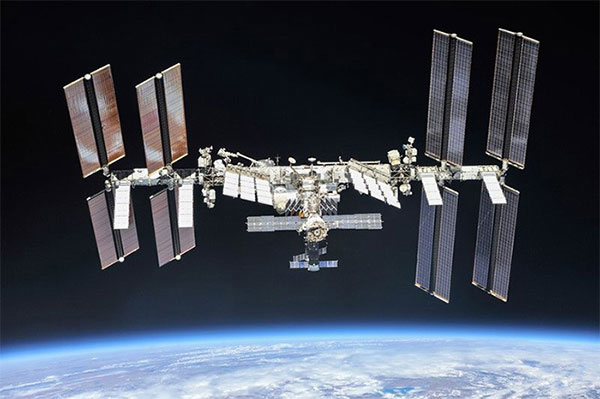
It is reported that the US and Russia are planning to shoot movies on the ISS. In the United States, actor Tom Cruise and director Doug Liman are said to be heading for the Crew Dragon as "space travelers." For Russia, rumor has it that director Klim Shipenko will leave Earth in addition to an actress. This marks the first time for a big actor or director to shoot a full-scale movie in space, and if it happens, it will be a hot topic.
Russia plans to dock the new multipurpose experimental module "Nauka (science)" to the ISS, but the launch has been postponed for years. The docking is reportedly scheduled for July this year.
On the other hand, China, who is not a participant of the ISS, plans to complete its own space station "Tiangong" by next year, and is expected to start construction by the end of 2021. According to People's Daily Online, Tiangong is mainly composed of three modules with a total mass of 66 tons, with up to 110 cubic meters of living space for the astronauts. Although Tiangong is smaller than the ISS (420 tons and 916 cubic meters), three astronauts can stay for an extended period and conduct multiple experiments simultaneously. In May 2020, the first launch of the Chang Zheng (Long March) 5B rocket, which will be used for constructing the space station, was successful, paving the way for the realization of the base.
India, which aims to have their own base by the latter half of the 2020s, has set a goal of launching the manned spacecraft "Gaganyaan" by 2022, and the country may carry out an unmanned test flight by the end of this year.
Aiming for the Moon by “Leveraging Our Strengths”
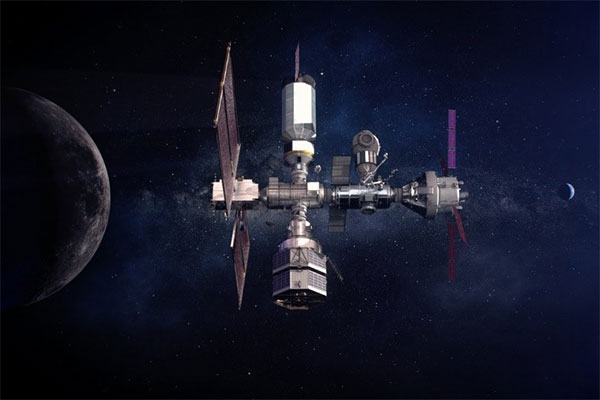
In the 2020s, the United States and international partners will build a manned outpost, dubbed the "Gateway", in the moon’s orbit. The US is also proceeding with the "Artemis Program", scheduled for 2024. Artemis aims for a manned lunar landing, the first in half a century since the Apollo missions. Japan, Europe and Canada have announced their participation. In July 2020, Japan's Ministry of Education, Culture, Sports, Science and Technology (MEXT) and NASA announced a joint declaration mentioning Japan’s landing opportunities. On February 13, Japan’s Ministry of Foreign Affairs announced that a Japan-US memorandum of understanding on Gateway has come into effect.
Japan will be responsible for the transportation of goods by the successor to the H-II Transfer Vehicle Kounotori, and to maintain the life support function of Gateway. According to the Government’s Space Basic Plan Process Chart, "Japan will utilize the nation's strength to carry out R&D with active participation from private companies," from next fiscal year and onwards. In view of securing a younger generation of astronauts to participate in the Artemis Program, the Japan Aerospace Exploration Agency (JAXA) is scheduled this autumn to recruit new astronauts for the first time in 13 years.
In November, the United States is planning the "Artemis I" mission to launch an uncrewed test flight of the manned ship Orion. Orion will travel between the Earth and Gateway to cater to the crew. The unmanned aircraft will be launched on the new large rocket SLS (Space Launch System). However, the development of Orion and SLS has been delayed due to COVID-19, and the launch could be postponed as a result.
The landing on the moon was originally scheduled for 2028, but in the spring of 2019 the Trump administration decided to fast-track the plan four years ahead of schedule. The reason for the change is unclear, but 2024 would have been Trump’s final year as president if he had been reelected. In order to meet the lunar landing’s new deadline, the construction plan of the Gateway was forced to undergo a major review. Space officials welcomed the earlier launch date, but questions related to safety remained. In the past, US space policy had been widely influenced by the ruling party and had affected stakeholder-countries involved in space development. Although the goal of landing on the moon remains unchanged, the overall timeline could be revised by the new Biden administration.
Spotless New Rocket
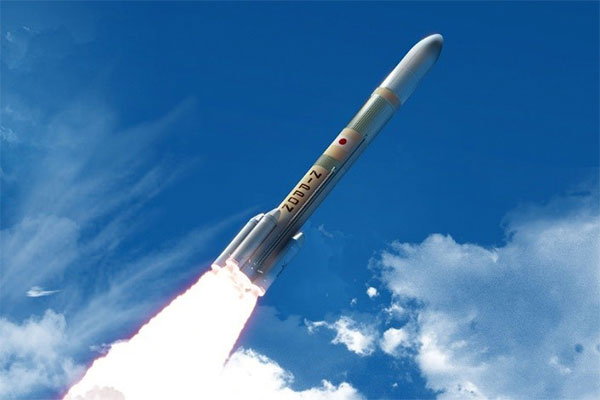
Japan's new large rocket "H3" will come out next year. It is a successor to the current "H2A" and an enhanced version of "H2B" that was discontinued last year. It is mainly being developed by JAXA and Mitsubishi Heavy Industries. The H2A and H2B have a 98% success rate and 46 consecutive successful launches, boasting world-class reliability. However, due to their inability to cope with larger satellites and accelerated reduction of manufacturing costs in the world market, the company is now moving forward with the full-scale development of large-scale rockets for the first time in 27 years since the first launch of "H2" in 1994. H3’s maximum launch capacity (stationary transition orbit) is over 6.5 tons, which exceeds H2B’s 6 tons.
The purpose for developing this new rocket is to give Japan the ability to launch satellites and probes without relying on other countries. As an easy-to-use rocket, Japan will try to attract orders to launch commercial communications satellites and foreign satellites. There are high expectations for this new rocket to lead Japan’s space industry.
The new rocket is a two-stage type that uses liquid fuel like the H2A, but the biggest feature is that it is going to adopt Japan's original two-stage engine combustion method for the one-stage "LE9" engine. The number of parts is greatly reduced at the cost of a slight sacrifice in fuel efficiency. By applying new technologies like 3D printers and incorporating automobile or commercial-off-the-shelf (COTS) parts, launch costs could be halved. The launch cost for the current basic H2A model is estimated to be about 10 billion yen.
Initially, the new rocket was scheduled for launch by the end of March 2021, but in May 2020 one part of LE9 was damaged in a combustion test. The technical issues were identified and JAXA decided to postpone it to September this year. JAXA's development manager said that measures have materialized: "Ambiguity is not allowed. We will face the technical barriers that stand in our way, deal with them appropriately, and finish the project flawlessly.”
Meanwhile, countries in Europe are rushing to develop next-generation launch systems like "Ariane 6". The commercial launch market has recently become tighter thanks to SpaceX's "Falcon 9." Falcon 9 accelerated the price war by designing reusable first-stage rockets. We will have to see whether the H3 rocket can build on its successes and penetrate the world market.
New Satellite to Achieve Both Wide Field-view and High Resolution
According to the government’s schedule, satellites will be launched three times next year by Japan’s mainstay rocket. Of these, two will be large rockets: H2A rocket No. 44 will launch the successor to Quasi-Zenith Satellite-1 (QZS-1), responsible for satellite-based positioning system (GPS) familiar to car navigation systems and smartphones; and the first H3 rocket will launch JAXA’s earth observation satellite ALOS-3 (Advanced Land Observing Satellite-3; Japanese name - Daichi3) into orbit.

ALOS-3, also known as Daichi3, is an optical satellite that takes images of the ground with a camera, and is the successor to the first "Daichi" that was in operation from 2006 to 2011. The resolution has been tripled from 2.5 meters to 0.8 meters while maintaining the original’s wide-swath view of 70 km. It is generally difficult for satellites to achieve both a wide field of view and high resolution, but this satellite achieves both by increasing the size and performance of its sensor. In the 2011 Great East Japan Earthquake (3/11), the first-generation ALOS photographed the disaster area and contributed to disaster-response administration. With ALOS-3, collapsed buildings and destroyed roads can be seen more clearly. Together with the radar satellite ALOS-2 (aka Daichi2) in operation, it is expected to contribute to disaster prevention, disaster response, and vegetation observation in Japan and overseas.
Furthermore, Japan will launch the “Innovative Satellite Technology Demonstration Model No. 2" via the small Epsilon No. 5 rocket. This will be an attempt to confirm the performance of new components and devices for space in the actual environment before putting them into practical use. JAXA will implement the program in response to the government's policy of promoting space utilization and industrial promotion. It was decided last year that 14 components and satellites made by private companies, universities, and colleges of technology (Kosen), would be installed on board. This is the second such attempt following January 2019.
Perfect Conditions for the Perseids Meteor Shower
According to the National Astronomical Observatory of Japan (NAOJ), Japan can look forward to several notable astronomical phenomena this year, including two lunar eclipses and the Perseids meteor shower. A total lunar eclipse will occur on May 26, when the moon completely enters the shadow of the earth. A partial lunar eclipse can be viewed on November 19. Only a few slivers will remain, meaning this too will be very close to a total eclipse.
A meteor or shooting star is a phenomenon in which cosmic dust enters the Earth’s atmosphere, burns up, and as it does so emits light. A lot of dust is left in the path of comets. Meteor showers occur every year when the Earth passes through such dust-ridden paths. The Perseids meteor shower, which reaches its peak around August 13 every year, is a typical example. This year, it will reach its maximum around 4 a.m. (Japan Time) on the same day. Under excellent conditions without moonlight, around 50 meteors are expected per hour. Let’s keep our fingers crossed for good weather!
Original article from JST’s Science Portal website
Translated by SSC Secretariat







